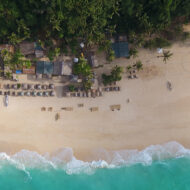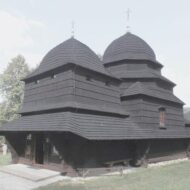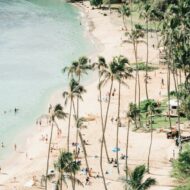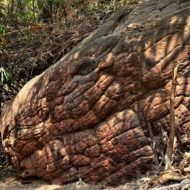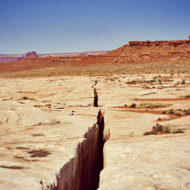Èze is a picturesque town on the French Riviera, located in the the Alpes-Maritimes department, and in the Provence-Alpes-Côte d’Azur region.France.
The city got its name thanks to the temple of the goddess Isis built here. At the very beginning of its existence, it was a small village, which grew to the scale of an entire urban settlement. The ruins of an ancient castle of the 12th century, which served as a fortress, have survived to this day.
This village is also famous for the fact that Nietzsche lived here for 18 years, here he wrote the famous book “As Zarathustra Spoke” and here he walked along steep mountain paths, going down to the sea.
The village of Eze lies behind a mountain called Tête de Chien (“Dog’s Head”), heading west from Monaco and known as one of the most magnificent places in France. Due to the significant difference in elevation – about 400 m – the village is divided into two regions – upper and lower. Upper region.
The village of Eze lies behind a mountain called Tête de Chien (“Dog’s Head”), heading west from Monaco and known as one of the most magnificent places in France. Due to the significant difference in elevation – about 400 m – the village is divided into two regions – upper and lower. Upper region.
The village of Eze is often referred to as an intermediate point between Nice and Monaco, but in fact it is located closer to Monaco.
Located between the sea and the mountains, the village of Eze has retained its medieval charm and atmosphere ,Dominated by the ruins of the 12th century castle. The winding streets and the baroque church are worth a detour ,Its many shops, art galleries, hotels and restaurants attract large numbers of tourists and honeymooners. As a result, Èze was referred to by some as a “village-musée” (“museum village”) In addition to beaches and unforgettable panoramic views, Eze attracts also tourists with numerous art workshops and craftsmen’s houses.
Located between the sea and the mountains, the village of Eze has retained its medieval charm and atmosphere ,Dominated by the ruins of the 12th century castle. The winding streets and the baroque church are worth a detour ,Its many shops, art galleries, hotels and restaurants attract large numbers of tourists and honeymooners. As a result, Èze was referred to by some as a “village-musée” (“museum village”) In addition to beaches and unforgettable panoramic views, Eze attracts also tourists with numerous art workshops and craftsmen’s houses.
Access : Coordinates: 43.7286, 7.3617 / The easiest way to get to Eze is by bus from Nice, Monaco or Villefranche. / The lower part of the city (Eze-sur-Mer) can be reached by direct train from Nice and Monaco.
Highlights :
- The village offers in its labyrinthine alleys, many art craft shops. Nietzsche’s path from the seafront, meanders on a steep slope to the perched village. It is said that Nietzsche, staying at the end of his life in Nice, ill, frequented this road, and was inspired to write the third part of Thus spoke Zarathustra.The lower seaside area is Eze-sur-Mer or Eze-Bord-de-Mer. Here is the beach and the Gare SNCF d’Eze train station.
- For swimming, a narrow strip of beach is left, which rests against the high walls of the nearby mansions. You can get to the beach along several narrow roads from the railway. station or coastal route.You can get here by rail or by bus No. 100 Nice-Menton.The distance in a straight line from the coast to the cliff village is 1 km.
- Church of the XVIII century Notre Dame de l’Assomption – Church of the Assumption of the Blessed Virgin Mary.
- in the village of Eze, cartoonist Walt Disney loved to relax.
- Poterne: double fortified gate dating from the 14th century. This is the only entrance to the old town of Eza.admire the famous city gates, which have served as reliable protection of Eze for many centuries.
- XIV century church Chapelle des Penitents-Blancs (Church of the Penitent Sinners of the White Brotherhood
- The Castellar or Brasca oppidum, listed as a historical monument in 1996 / Series of 4 blockhouses called casemates of the Place de Nice.
- Riquier Mansion: It served as the seat of the Eze Lords in the 12th and 15th centuries./ Musée d’Eze.
- Sainte-Croix Chapel: Dates to the 14th century. / Planet area: beautiful Italian-style fountain was created in 1930, This little place owes its name to the fact that it is the only flat place in the village. / Water mill: former flour mill of Pissarelles.
- Exotic Garden – Jardin botanique d’Èze: Specializing in the cultivation of cacti,The Eze Exotic Garden is located at the top of the medieval ruins in Eze-le-Village.
- Perfume factories / Cemetery: Francis Blanche, grave of the famous French actor.
- The Nietzsche trail : “Nietzsche Route” – a narrow path that connects the old village with the sea. They say, walking along it, the famous German philosopher Friedrich Nietzsche wrote the main part of his work “Thus Spoke Zarathustra.”
- Chapel of St. Cross (Chapelle Sainte-Croix) :The chapel is also known as the Chapelle des Pénitents Blancs. It was built in 1306, making it the oldest building in Eze.
Events : At the end of July, they celebrate the “Holiday of Bygone Times”. Residents dress up in medieval costumes and offer their guests food according to real old recipes.
Activities : sightseeing / photo opportunities / “Nietzsche’s Trail” Walking along it, the philosopher wrote his work “Thus Spoke Zarathustra.” / Make your own perfume at the Galimard or Fragonard perfumeries.
Go next : The village and Le Grande Carniche / The city-state of Monaco is just 5 kilometres East. / Nice, the main city of the département, is about 7 km West. / La Turbie, another small village located East on the Grande corniche road.






